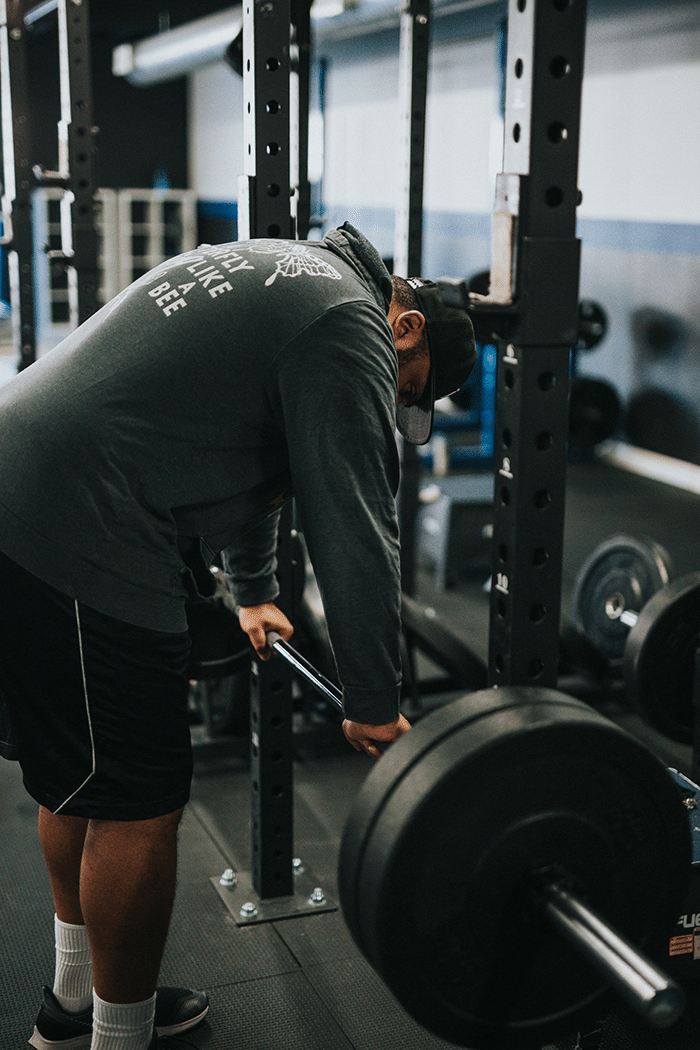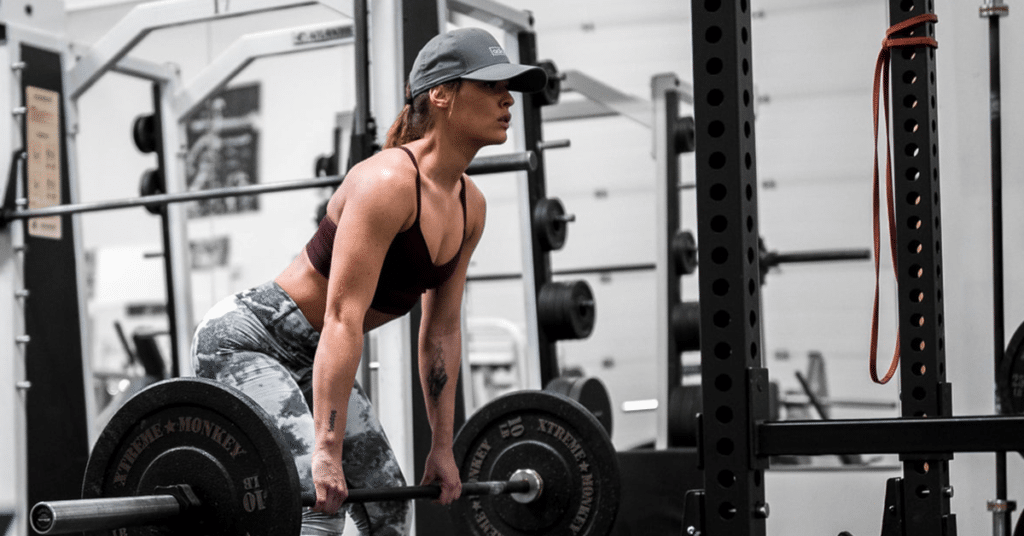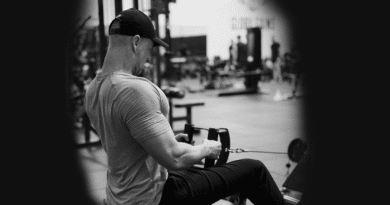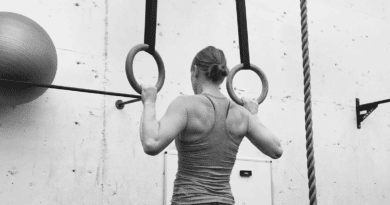Rack Pulls for Strength and Muscle – Benefits, Technique and Tips
This extensive guide will teach you everything you need to know about Rack Pulls.
What are Rack Pulls?
Rack Pulls are a highly effective barbell Deadlift exercise that involves lifting and locking out a heavy load from a raised position on the power rack.
Muscles Worked by Rack Pulls
Rack Pulls work the following muscles:
- Hamstrings
- Quads
- Glutes
- Erector Spinae (Lower Back)
- Traps and Back Muscles
Hamstrings
The lower the starting point for the barbell, the more the hamstrings will be involved, tested and worked.
Quads
The quads have the work hard to lock out the knees fully at the top of the movement.
Keeping your hips low through the range of motion will also engage the quads more if you want to specifically target them.
Glutes
The exercise is a great way to develop power, strength and muscle in the glutes.
The minimised range of motion lessened the stress placed on the lower back and shifts stimulus to the glutes so that enough force is generated to lock out the hips.

Erector Spinae (Lower Back)
The shortened range of motion means less hip extension is required to lock out the load at the top of the pull.
This means that the lower back is still targeted and worked, but is not placed under the full pressure of a complete Deadlift. This allows any lifter to strengthen their lower back and improve the lock out portion of their Deadlift.
Traps and Back Muscles
The traps and back are significantly tested by Rack Pulls because you are working with heavy loads which are great for building strength and stimulating muscle growth.
Forearms and Grip
The exercise can provide the useful ancillary benefit of augmenting grip and forearm strength.
Make sure not to use straps if you want to see the results for this part of your fitness.
Benefits of Rack Pulls
Rack Pulls have many benefits for your health, fitness and mentality.
Explosive Pulling Power
If you want a better Deadlift, add Rack Pulls into your training plan.
They allow you to focus on a single part of the lift and develop incredible pulling power and lockout strength.
These are specifically designed to improve your Deadlift and will have benefits for other pulling exercises such as Cleans.
Stronger Grip
Rack Pulls are a prodigious exercise for grip strength because they are performed with exceptionally heavy loads.
Additionally, you can test your grip to its limits because the worse than will happen is that you are simply unable to grip the weight and will have to lower the barbell back to the rack.
Make sure not to use straps when working on your grip strength.
However, using straps will enable you to lift more weight because your grip is then eliminated as a factor that can cause the lift to fail.
Redefining New Limits for your Body

Rack Pulls are one of the few exercises where you will be able to lift more weight than your actual Deadlift 1 rep max.
This is because it operates with a partial range of motion. You only have to lift the weight from the height of the rack to the fully locked out position at the top.
This means you can test and train your central nervous system to experience new stimuli that it is not accustomed to.
As a result, your body will adapt and raise its physical and mental standards to this new level. It will understand that it is now capable of more.
Less Lumbar Stress
Rack Pulls begin with a more vertical torso position because of the raised starting point of the barbell on the rack.
This places less stress on the back. This can be a great way to de-load as well.
Incredible Back Strength and Muscular Development
Rack Pulls demand a lot of work and effort from your upper back. This translates into upgraded strength and more muscle mass when you program according to your specific goals.
Want bigger traps? Add Rack Pulls into your routine.
How to do Rack Pulls
Use these steps to perfect your lift.
- Set your rack to the required height
- Grip the barbell and adopt your usual Deadlift stance
- Inhale and brace your core, glutes and grip
- Press the barbell against your body, brace the lats and lift. Push your feet hard into the floor to generate momentum and power
- Push the hips forwards and lock out the lift fully at the top
- Stay tight and hold the weight for a second at the top
- Lower the weight to the starting position and exhale
- Repeat for the desired number of reps
Technique Tips
As you get better, make sure that you load up the weight and don’t simply raise the starting position of the movement.
The more honest you can be with yourself about your own weaknesses, the more benefit you will get from this exercise.
To get stronger engagement from your hamstrings and glutes, adjust how much you twist your feet outwards.
This should not be excessive but the difference of a few degrees can produce a lot of effect.
Imagine you are standing on a piece of paper and you want to try and tear it in half with your feet.
If you want to additionally work on your grip then hold the weight for longer at the top lock out position.
What Height Should I Use for Rack Pulls?
Start with the barbell resting just above knee height as a rough rule.
However, the movement is designed to improve your power, skills and strength at the points where you are weakest.
If you have trouble pulling from below the knee then start the Rack Pull from that height.
If the lockout at the top is your sticking point, arrange the height to start from above the knee.
Rack Pulls Variations
These variations will provide your body with similar stimulus in different ways to traditional Rack Pulls.
Axle Bar Rack Pulls
Simple and highly effective. This method is exactly the same except you use a Axle bar (or fat grip handles on a regular barbell).
This makes the exercise considerably harder for your grip and makes the weight feel even heavier.
Reverse Band Rack Pull
This variation will help to build confidence and pulling power.
The bands are set up so that they help to pull the bar upwards at the beginning (they need to be attached overhead) and reduce in tension the closer you get to full lockout.

Rack Pulls with Accommodating Resistance
Adding chains or other types of resistance is a great way to spice up the movement and add difficulty.
Isometric Rack Pull
This is performed inside a power rack and involves lifting the barbell as hard as you can against a pair of safety bars.
This teaches you how to grind through tough points in the lift and maximise your power output. Test yourself at different heights for optimal results.
Rack Pulls Alternatives
These alternatives can all be substituted in for (or combined with) Rack Pulls to strengthen your body and skills.
Sumo Deadlift
This also has a shorter range of motion than a conventional Deadlift.
The Sumo Deadlift and the Rack Pull both ultise and improve the traps, glutes and upper back to a great degree.
Both exercises are highly useful for lifters than have strength or movement limitations at the bottom of the lift.
Trap Bar Deadlift
Again, in comparison with the conventional Deadlift the Trap Bar Deadlift has a shorter range of motion.
It is also an effective way to strengthen the lock out.
Finally, you can also load up the Trap Bar Deadlift with a lot of weight and test your upper limits, often even more than your conventional Deadlift 1 rep max.
Who Should Use the Rack Pull?
The Rack Pull is incredibly useful for many different types of athlete and people, so where do you fit in?
In General
If you want more explosive power and full body strength for sports, climbing, kayaking or life in general then the Rack Pull is an exciting and challenging option.
Powerlifters and Strength Athletes
Rack Pulls are a great tool to hunt down and destroy weaknesses in your Deadlift and pulling strength and power.
They will add strength and muscle to the glutes, back, and traps, and improve sport-specific performance.
Functional Fitness Athletes
Rack Pulls will build general strength and pulling power for almost all other barbell exercises that you will need to perform, from the Clean to the D Ball.
Additionally, as a fairly brutal exercise, they will build raw physical and mental strength that can be carried across to odd object work and other implements such as Yoke Carries or Farmers Walks.
Sets, Reps and Programming
So, what sets, reps and programming should you use with Rack Pulls to get the best results.
Rack Pulls for Strength
Go for 3 – 5 sets of 3 – 6 reps with up to 5 minutes of rest between sets (depending on how heavy you choose to go).
R Pulls for Muscle
Aim for 3 – 5 sets of 8 – 12 reps with 30 – 45 seconds of rest between sets. Go hard and push yourself.
Combining the exercise with the Isometric Rack Pull can yield excellent results and maximise time under tension during the session. Add the latter in as a finisher for back day.
R Pulls for Technique
Choose light to moderate loads and concentrate all your focus on excellent form.
3 – 4 sets of 6 – 8 reps is a good start and remember that the aim is excellent technique, not a new PR so be intelligent with your lifting.
Learn to Trap Bar Deadlift.
FAQs
Learn more about Rack Pulls.
Should I do Rack Pulls above or Below the Knee?
Rack Pulls can be performed effectively from both above and below the knee. It really depends on where your particular sticking points are and which parts of the lift that you want to train.
What’s the Point of Rack Pulls?
The point of the Rack Pull is multifaceted.
They include muscle mass, strength, activating the posterior chain, improved pulling power, elimination of weaknesses in the Deadlift, better grip strength and enhanced hamstrings, quads, spinal erectors, and traps.
Are Rack Pulls Worth It?
Yes. They are an excellent and surprisingly versatile exercise to include in a training program to keep things challenging and effective. They even improve neurological engagement and prime motor patterns for other lifts and movements.
Is Rack Pull Better than Deadlift?
If you want to concentrate on the upper back and traps or specific parts of the full range of motion, then Rack Pulls will work better than Deadlifts.
However, Rack Pulls should never be a complete substitution for Deadlifts because they only train a partial range of motion and do not improve pulling strength from the floor.
Do Rack Pulls Build Lats?
Yes, Rack Pulls will build big and strong lats. You will be able to shift more weight than with any kind of Row variation so you can load up and challenge your lats in a huge way.
Learn More
Expand your training knowledge with Face Pulls.




